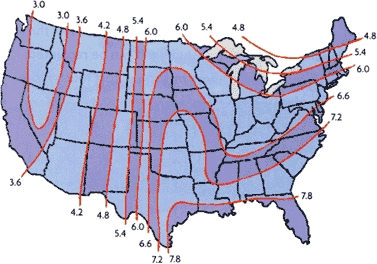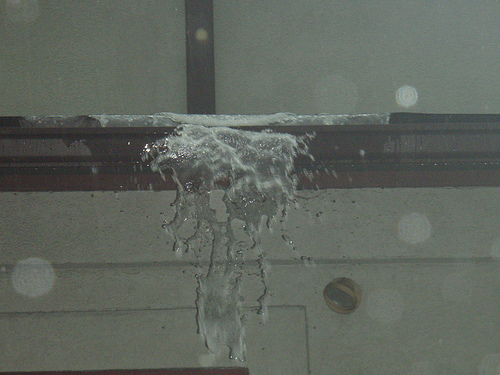Gutters are an integral part of every home. They protect the structure by catching runoff water and channeling it to locations where it won’t seep into the earth around the base of the home. Under normal conditions, gutters can take all of the rainfall from a storm and make sure it doesn’t seep into the foundation or ruin landscaping near the home.
But what about extraordinary precipitation events? Will gutters protect a home during torrential rainstorms?

Are your Gutters Big Enough?
It’s not really possible for every gutter to function perfectly in every possible storm. But you can figure out whether the gutters you have on your home are up to the task for diverting rainfall in your area.
All gutters are rated by their manufacturers to collect and displace a certain amount of rainfall. The rating system is measured by the maximum area of a roof that the gutter can handle, assuming that rain falls at a rate of an inch an hour. This information is usually found on the packaging for the gutters themselves, or furnished by the contractor that installs the gutters on your home.
Of course, torrential rainfall will come down at a rate much higher than an inch per hour. But by making a few calculations, you can figure out if your gutters are appropriate for your home and climate.
- Find the surface area of your roof by multiplying its width times its length in feet.
- Figure out your roof pitch, which is the number of inches it rises for every 12 inches that it runs. Measure out a foot of roof from the edge, then hold your ruler or measuring tape parallel to the ground (use a level). Then measure the vertical drop from the ruler or tape to the edge.
- Determine your roof pitch factor using the following chart:
If your roof pitch is between then your roof pitch factor is 0 and 3 1 3 and 5 1.05 5 and 8 1.1 8 and 11 1.2 11 or more 1.3 - Multiply your roof’s surface area by the roof pitch factor. This is your roof watershed area.
- Now, you must figure out the maximum rainfall intensity for your geographic location. You do this by looking at a map like this one:
 These figures show the largest numbers of inches per hour that will most likely happen in a 10-year period for a given part of the U.S. Find the number that corresponds to where you live and multiply it by your roof watershed area.
These figures show the largest numbers of inches per hour that will most likely happen in a 10-year period for a given part of the U.S. Find the number that corresponds to where you live and multiply it by your roof watershed area. - The number you get should be equal to or less than the rating for the gutters than are on your home. If it is more, then your gutters may not adequately handle torrential rainfall.
It’s a Guide, Not Gospel
Of course, your gutters must also be installed properly and in good working order for them to perform up to their maximum ratings. And gutter guards don’t affect how much rainfall your gutters can handle, since the water runs off of the roof instead of falling into the gutters from above. Plus, there have been storms which exceed the maximum predicted rainfall intensity for a given area.

But performing these computations should give you some peace of mind by knowing that your gutters stand a very good chance of handling any rainstorm that Mother Nature might throw at you.
Image credit #2: rain-gutter-guide.com.
